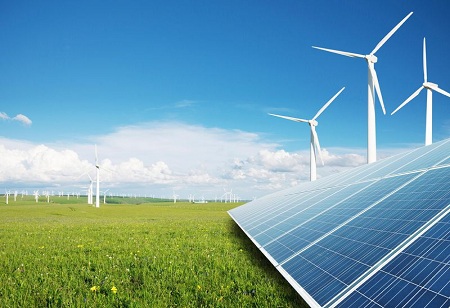A transition towards renewable energy is evident globally as the awareness pertaining to climate change rises. If we look at the India market in particular, the
renewable energy sector of the country is currently the fourth most attractive renewable energy market in the world. As per the data from 2018, in terms of installed capacity, the country is at the fourth position in wind power, fifth in solar power and fifth in renewable power. Majority of this growth can be attributed to the increase in FDI which has buttressed the renewables ecosystem in India. Data released by Department for Promotion of Industry and Internal Trade (DPIIT) says that the Indian non-conventional energy sector witnessed an FDI inflow worth US$ 9.22 billion between April 2000 and March 2020.
Moreover, the government is making effort to support the renewable energy production through various schemes and incentives. It is offering subsidies and tax benefits to producers and consumers to encourage the adoption of solar energy. One of the many examples is the fact that the solar power generation companies need not pay income tax on the profit gained during the first ten years after starting their operation.
This is a considerable encouragement for power generation companies who as a result are readily looking to do away with fossil fuels and are investing in renewable energy such as solar power.
Building storage capability
Looking at the major challenge which is to make it viable in the long run, several energy companies are devising new systems to make the process a continuous one in terms of power generation, given the intermittent nature of solar and wind energy. This can only be achieved by creating and boosting storage capability which can provide uninterrupted supply of power through such renewable sources. Battery storage systems are going to help in this regard by integrating solar and wind renewables in power systems. International Renewable Energy Agency (IRENA) has shown through its analysis that electricity storage technologies can prove to be useful in several cases in the power sector from electric mobility to utility-scale applications. For instance, utility-scale batteries can be used to allow greater feed-in of renewables into the grid. This can make it possible to store excess generation.
“India has done an exemplary work in the space of renewable energy and running the largest energy access expansion plan. We have connected every household, connected whole country into one integrated grid and we are the only G20 nation which has been able to keep the temperatures within 2 degree by its actions,” said Union Minister R K Singh at a recent event.
As such initiatives can go a long way in transforming the renewables sector, India is poised to be one of the front-runners in the renewables segment with several startups and large players working to harness the immense potential of this market. Moreover, with time, we are seeing the price of renewable energy going down which is a good sign for this industry as it will encourage more people to adopt solar energy. Hence, the growth prospect for renewable energy players is bright.
